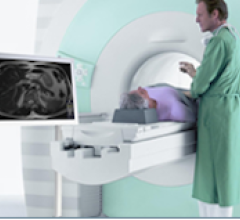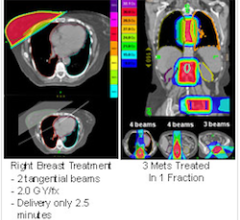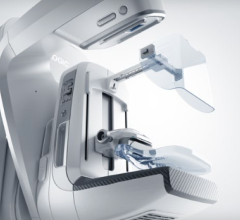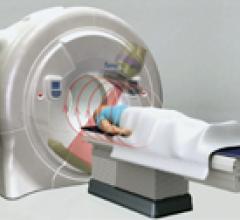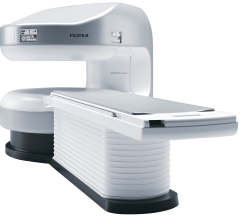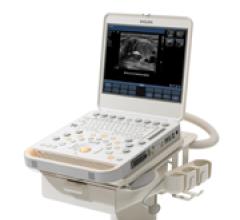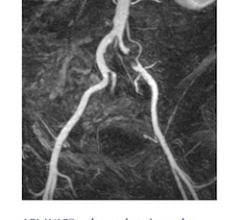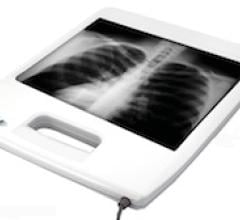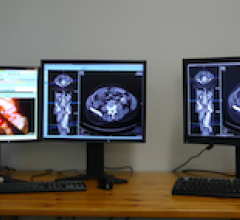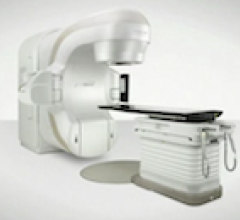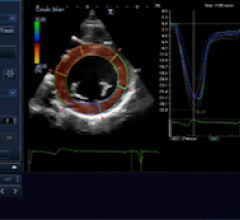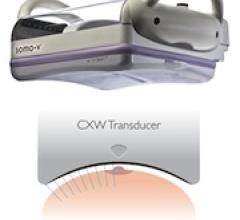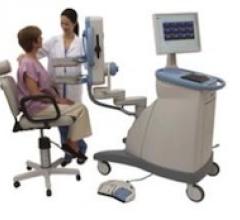October 31, 2011 – The Breast journal published new data from a prospective study conducted at the Seoul National University College of Medicine in Korea that shows positron emission mammography (PEM) has a higher sensitivity for tumor detection compared with whole-body positron emission tomography (PET)/ computed tomography (CT) when using both visual as well as quantitative analysis. These results were particularly striking and significant for smaller-sized tumors (less than 2 cm), likely due to the improved spatial resolution offered by PEM. This demonstrates PEM's clinical utility in being able to more effectively diagnosis early stage cancer.
October 31, 2011 – NordicNeuroLab (NNL), a developer of products for functional neuroimaging, announced the launch of its magnetic resonance (MR)-compatible liquid crystal display (LCD) display. Branded the NNL LCD Monitor, the monitor is intended for use in functional MR imaging, patient comfort and relaxation, and as procedural magnetic resonance imaging (MRI) display.
October 31, 2011 – Accuray announced that more than 100 of its TomoDirect treatment modality systems are now in use at leading cancer centers throughout the world, offering patients the option of treatment with image-guided, intensity-modulated radiation therapy (IG-IMRT) for routine radiation therapy indications.
While most women understand the importance of health screenings, an estimated 72 million have missed or postponed a ...
October 31, 2011 – To ensure MR imaging is as efficient and safe as possible, Toshiba America Medical Systems has unveiled enhancements to its Vantage Titan MR (magnetic resonance) product line, including the first high-density 16-channel flexible coil system (works-in-progress). The new additions to the Vantage Titan MR systems are designed to make it easier for clinicians to complete high-quality exams and improve diagnostic efficiency.
October 28, 2011 — Accuray Inc. announced the U.S. Food and Drug Administration (FDA) has granted the company 510(k) clearance to market the Dose Control System (DCS), a new performance-improving feature for its TomoTherapy system.

SPONSORED CONTENT — Fujifilm’s latest CT technology brings exceptional image quality to a compact and user- and patient ...
October 28, 2011 — International medical imaging IT company Sectra announced the signing of a multi-year Master Research Agreement with University Hospitals (UH) in Cleveland. UH and Sectra will collaborate to develop solutions and enhancements in medical imaging; their goals consist of improving patient care, delivering better healthcare at lower costs, and boosting the efficiency and productivity of radiologists.
Fujifilm’s APERTO Lucent is a 0.4T mid-field, open MRI system addressing today’s capability and image quality needs ...
October 28, 2011 — The benefits of using a cloud-based service to share medical imaging studies and reports will be the focus of a presentation at RSNA 2011. The talk by Mark D. Kovacs, M.D. and Michael A. Trambert, M.D. reviews experience with eMix, the cloud-based medical data-sharing service.
October 28, 2011 — Philips announced customers have rated it No. 1 for the 19th consecutive year in overall service performance for “Ultrasound All Systems,” comprised of radiology/OB-GYN and cardiology instruments in the annual IMV ServiceTrak surveys.
We Americans like to celebrate a lot, giving special recognition to all sorts of things that are near and dear to our hearts. We dedicate a day, week or month to create such eclectic events as National Eggs Benedict Day (April 16), National Crochet Week (mid-March), National Blueberry Month (in July, according to an official proclamation from the U.S. Department of Agriculture, no less) and National Piano Month (September).
SPONSORED CONTENT — Fujifilm’s latest CT technology brings exceptional image quality to a compact and user- and patient ...
October 26, 2011 –Lantheus Medical Imaging announced it has been awarded three-year supplier contracts with Premier Purchasing Partners, the group purchasing unit of the Premier healthcare alliance, in the category of cardiac ultrasound contrast media for its ultrasound contrast agent, Definity Vial for (perflutren lipid microsphere) Injectable Suspension, and its magnetic resonance angiography (MRA) blood pool imaging agent, Ablavar (gadofosveset trisodium).
October 25, 2011 — Kubtec, a manufacturer of digital specimen X-ray systems, has received FDA approval on its Digiview 250. Designed for portable imaging applications and positionable with one hand, the Digiview 250 is a tool for neonatal imaging, as well as the examination of extremities, for use in mobile systems and general radiology applications.
October 24, 2011 – Telemis launched a new version of its popular picture archiving and communication software (PACS) that adds HD video support and improved options for collaboration between medical professionals. Telemis-Medical PACS version 4.3 makes its debut at this year’s Journées Françaises de Radiologie exhibition and congress in Paris alongside the company’s latest PACS demonstrations, prototypes and “proof of concept” technologies.
SPONSORED CONTENT — EnsightTM 2.0 is the newest version of Enlitic’s data standardization software framework. Ensight is ...
October 24, 2011 – Kambiz Dowlat, M.D., founder of Novian Health, has been honored by the Chicagoland-area affiliate of Susan G. Komen for the Cure in the inaugural class of Pink Tie Guys. Dowlat, developer of Novilase image-guided laser therapy for breast tumors, is one of what the organization called "an exclusive group of KoMEN making a difference in the fight against breast cancer."
October 24, 2011 – Cancer experts from around the world gathered in Berlin to hear about advances in radiotherapy that are bringing additional treatment possibilities for cancer patients. More than 450 oncologists, physicists and radiotherapy practitioners are at the two-day Berlin Oncology Summit, organized by Varian Medical Systems, to share experiences and highlight the expanding use of radiotherapy and radiosurgery to treat an increasingly wide range of cancers.
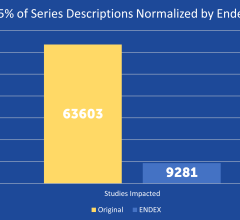
SPONSORED CONTENT — EnsightTM 2.0 is the newest version of Enlitic’s data standardization software framework. Ensight is ...
October 24, 2011 – Virtual Radiologic (vRad), a technology-enabled national radiology practice, has announced a premier radiology partnership with Icon Medical Imaging, the medical imaging division of Icon.
October 24, 2011 – As a result of the long-standing relationship between Philips Healthcare and ScImage Inc., the two companies are pleased to announce a newly developed integration option between ScImage’s PicomEnterprise picture archive and communications systems (PACS) and the Philips PageWriter TC series cardiographs. As a team, the two companies believe this interface will greatly simplify clinical electrocardiogram (ECG) workflow and reduce the complexity normally associated with custom integration.
October 24, 2011 – The European Association of Echocardiography (EAE) has announced that it is working together with the American Society of Echocardiography (ASE) to issue joint recommendations on the usefulness of serial echocardiographic evaluations and the potential impact of more advanced ultrasound technologies (in particular speckle tracking echocardiography) in patients undergoing cancer therapy.
October 21, 2011 — At RSNA 2011, U-Systems will showcase its new Reverse Curve Soft Touch Transducer technology. The system was designed and optimized for use with the U-Systems’ somo•v Automated Breast Ultrasound (ABUS) system.
October 21, 2011 — The National Institute of Cancer (INCan) is the first to offer positron emission mammography (PEM) to the residents of Mexico. PEM is the breast application of the Naviscan high-resolution positron emission tomography (PET) scanner that shows the location as well as the metabolic phase of a lesion. It is the only U.S. Food and Drug Administration (FDA)-cleared 3-D molecular breast imaging (MBI) device on the market.
October 21, 2011 — When we think about breast cancer, most of us think of it as a disease only affecting women. The truth is, about 2,140 new cases of invasive breast cancer will be diagnosed among men this year, according to the American Cancer Society.

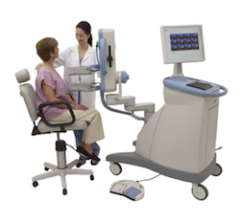
 October 31, 2011
October 31, 2011 
